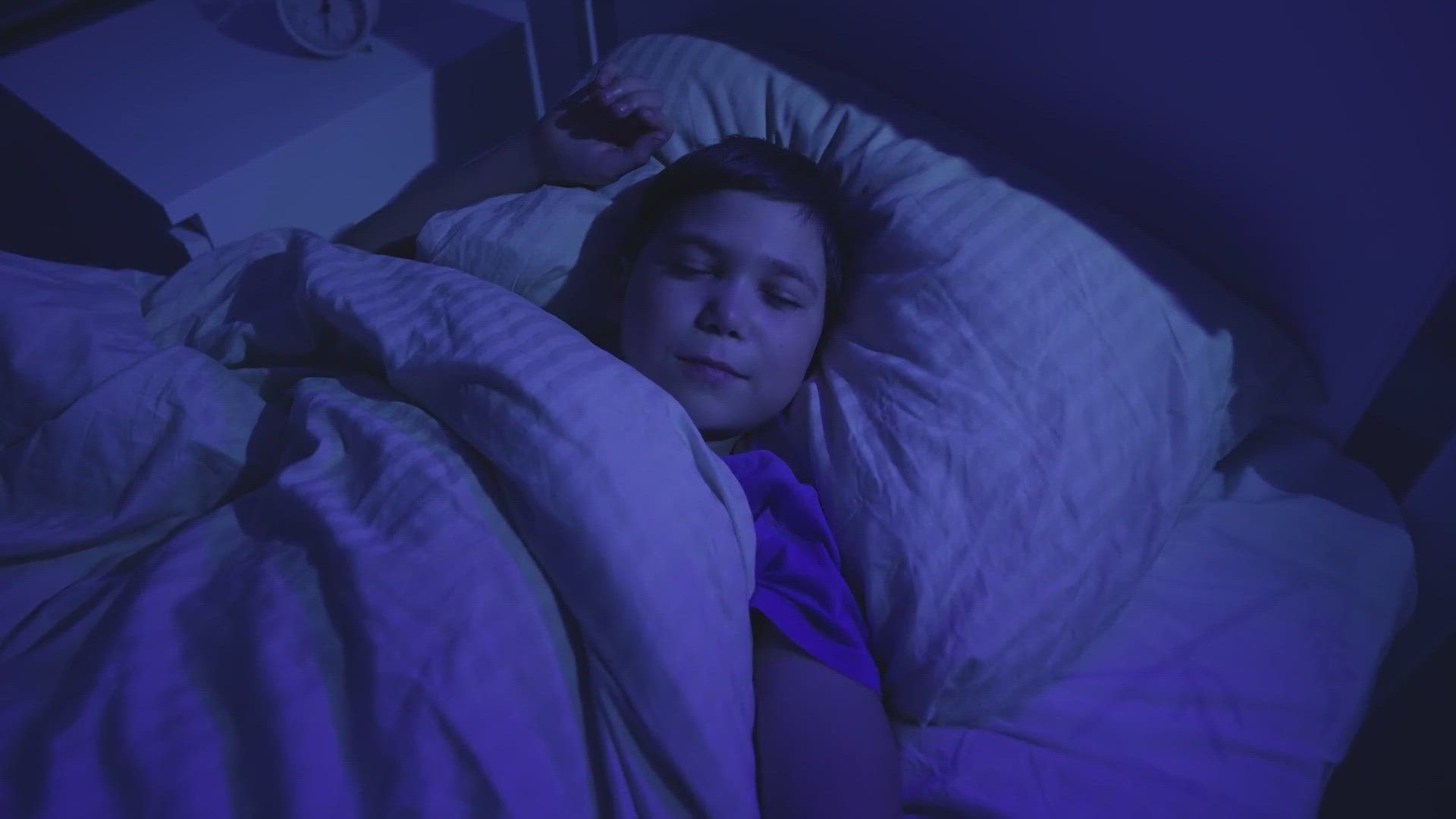SAN ANTONIO — It is that time of year to spring forward to Daylight Saving Time and lose an hour this weekend. But experts said the clock change is actually harder on children than adults.
Just like adults, the clock change disrupts a child's circadian rhythm. They also have to adjust to what feels like an earlier wake up time, and go to bed when it may still be light out, which is much harder on younger bodies.
"There's extended daylight hours. So they think it's still early. And so they might have a hard time falling asleep. And so that might lead to some bedtime resistance," said Dr. Funke Afolabi-Brown, board-certified sleep medicine physician.
Naps are disrupted too, and that could affect their behavior and mood big time.
"Now, trying to put them to nap at a time that seems earlier than usual may lead to some nap resistance," said Dr. Afolabi-Brown.
So how much sleep do kids need?
Toddlers between one and two years old need 11 to 14 hours including naps. Preschool children between three and five years need 10 to 13 hours including naps. School-age children between six and 13 years of age need nine to 12 hours of sleep. And finally, teenagers between 14 and 17 years about eight to 10 hours.
Mothers surveyed by Baby Center said they lose about one and a half hours of sleep when we Spring Forward.
"Not only are you having to deal with your children having all of these symptoms in the days following daylight saving time, but also you're not at your peak physical state either, so it's just really a tough time for families," said Robin Hilmantel, senior director of editorial strategy and growth at BabyCenter.
To help you sleep, studies show if you have an alarm clock that gives off a cool color light, you may want to try one that uses warmer colors instead. After dark try to avoid bright lights including fluorescent and LED bulbs, and turn them off two hours before bedtime. If you must sleep with a light, try to make it a warmer color. Lastly, you should turn your thermostat down to the 60 to 70 degree range, which most find is an optimal sleep temperature.
Unlike adults, for kids, losing sleep doesn't only impact their day or week, but also how they grow up.
"Their concerns are related to their growth and their brain development also if they're not getting enough sleep. So it's definitely very important," Hilmantel said.
You can find more tips to help kids sleep on KidsHealth and The Sleep Foundation.

